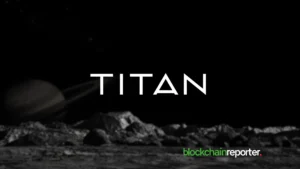
Meson Finance, a cross-chain protocol, has announced a strategic partnership with Neo X, a blockchain powering native cryptocurrency NEO. With the integration, Neo users now can access Meson’s trading infrastructure, which supports swaps across over 60 blockchain protocols.
Meson operates based on the use of a non-custodial infrastructure built on top of hashed time-lock contract swaps. This technique ensures users maintain control over their assets throughout the swapping process.
The integration provides Neo users with liquidity in swap pools, including bridging in and out of the ecosystem.
Neo X enables cross-chain asset swaps
Neo X teamed up with Meson to put up native cross-chain swaps on its network. The new feature enables Neo users to move assets across various blockchains, like converting Solana into Bitcoin, directly on the Neo X platform.
This is a big milestone for Neo X as the Meson cross-chain network allows Neo users to flawlessly move assets across varied blockchains. Users can now swap assets without the need for wrapped tokens, making this approach more secure and convenient.
Neo users can now access this new feature within the Neo X app. The upgrade improves the platform’s ability to swap, trade, and stake crypto tokens directly from Neo X wallets. With this integration, Neo X is positioning itself as a flexible and user-friendly platform for people looking for seamless and secure cross-chain transactions.
Enhancing blockchain interoperability and liquidity
The rising number of blockchain protocols has resulted in a disintegrated crypto ecosystem. Platforms like NEO X, Ethereum, Solana, Binance smart chain, and several others operate independently. This makes it difficult for users to transfer assets seamlessly across these networks. This absence of interoperability causes liquidity problems, as users are normally compelled to use numerous wallets and exchanges to trade tokens.
The emergence of cross-chain liquidity has become an important solution to this problem, providing an approach for platforms and users to transfer assets smoothly between different blockchains. This enhances crypto markets’ effectiveness and offers better flexibility for users to use various blockchain networks.
Cross-chain liquidity solutions enable the existence of a seamless, interlinked financial ecosystem. This approach allows users to access low fees of layer 2 networks like Optimism and tap into Ethereum’s smart contract capabilities. And even use high-speed networks of newer protocols like Solana.
As the need for more user-friendly and smooth crypto experiences rises, the need for strong cross-chain liquidity solutions increases. These innovations are not just a technological development. They are a fundamental shift towards a more collaborative and open future of crypto and blockchain.
Cross-chain liquidity solutions aim to resolve interoperability issues (a fundamental problem) in blockchains by connecting the gaps between various protocols. By allowing tokens to effortlessly move across networks, these solutions establish a more dynamic and interlinked DeFi ecosystem. This enables users to capitalize on the unique strengths of various protocols while eliminating challenges related to cross-chain transactions.
This approach is an essential step in the growth of DeFi markets, enabling the creation of a more efficient, accessible, and open financial system. The technique unlocks new possibilities for the future of DeFi and crypto markets and attracts more institutional and individual investors.






